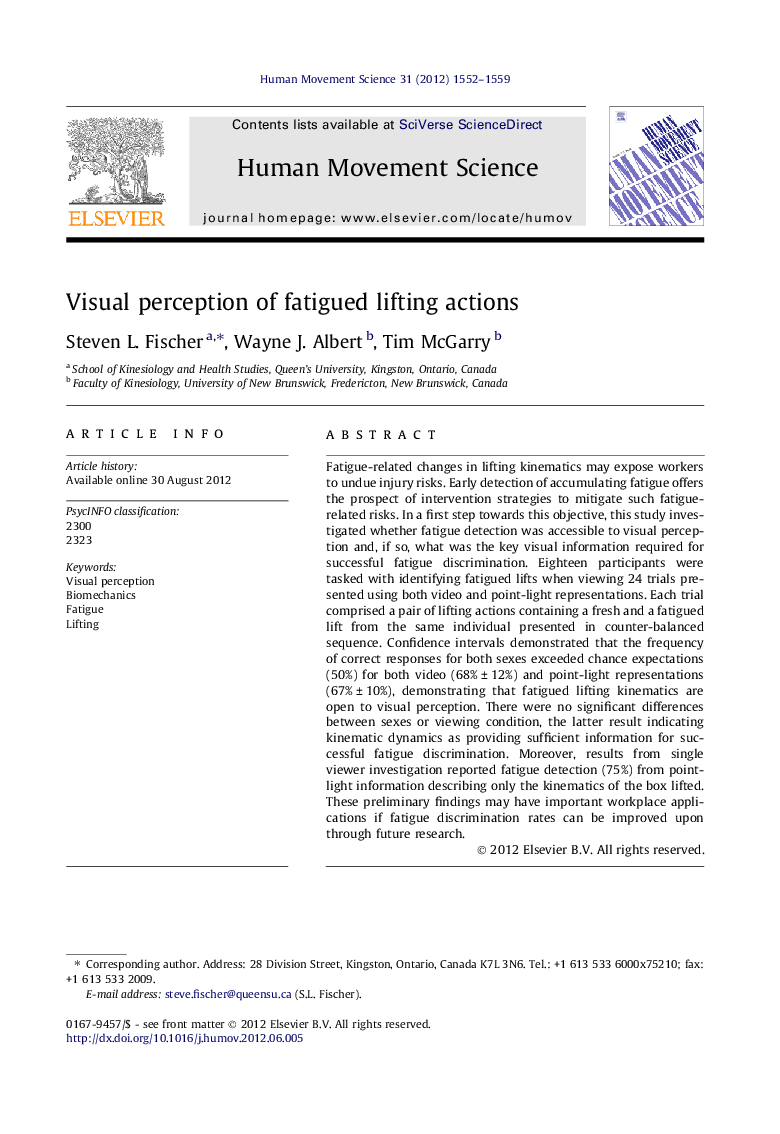| Article ID | Journal | Published Year | Pages | File Type |
|---|---|---|---|---|
| 928516 | Human Movement Science | 2012 | 8 Pages |
Fatigue-related changes in lifting kinematics may expose workers to undue injury risks. Early detection of accumulating fatigue offers the prospect of intervention strategies to mitigate such fatigue-related risks. In a first step towards this objective, this study investigated whether fatigue detection was accessible to visual perception and, if so, what was the key visual information required for successful fatigue discrimination. Eighteen participants were tasked with identifying fatigued lifts when viewing 24 trials presented using both video and point-light representations. Each trial comprised a pair of lifting actions containing a fresh and a fatigued lift from the same individual presented in counter-balanced sequence. Confidence intervals demonstrated that the frequency of correct responses for both sexes exceeded chance expectations (50%) for both video (68% ± 12%) and point-light representations (67% ± 10%), demonstrating that fatigued lifting kinematics are open to visual perception. There were no significant differences between sexes or viewing condition, the latter result indicating kinematic dynamics as providing sufficient information for successful fatigue discrimination. Moreover, results from single viewer investigation reported fatigue detection (75%) from point-light information describing only the kinematics of the box lifted. These preliminary findings may have important workplace applications if fatigue discrimination rates can be improved upon through future research.
► Viewers distinguished between lifts with a success rate greater than chance. ► Point light data alone was sufficient to inform detection. ► Perception based fatigue indices may be plausible for industrial applications.
